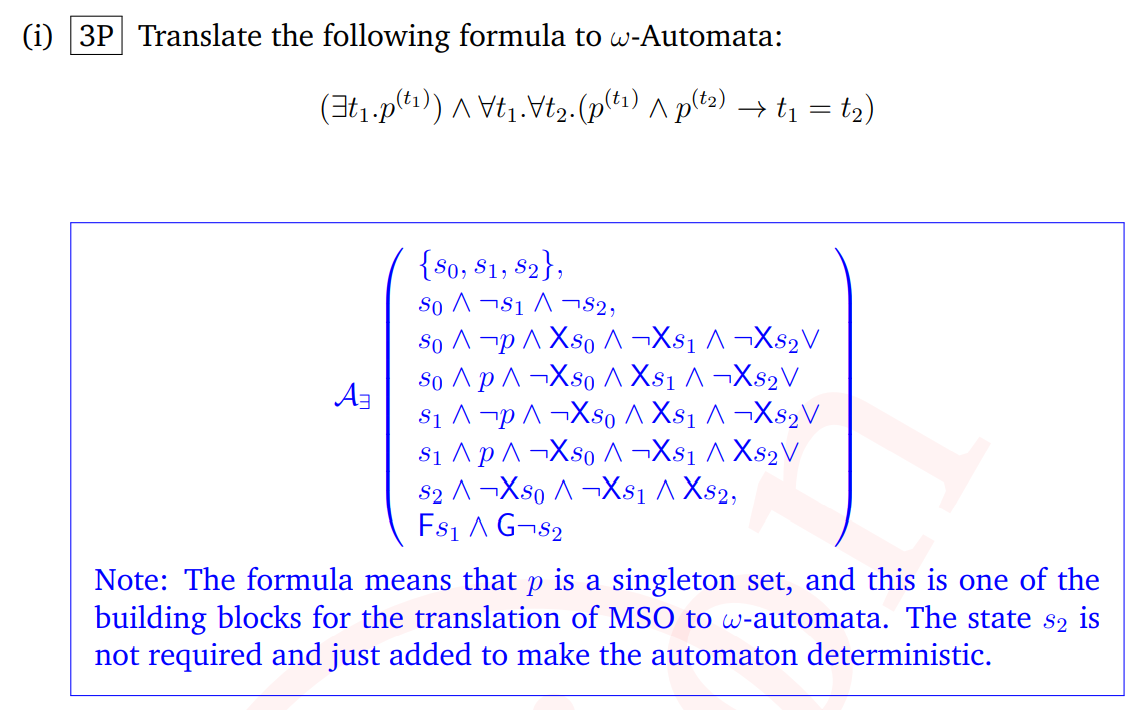Exam : 17.02.2021 : Q. 8 (i) : 2021.02.17.vrs.solutions.pdf (uni-kl.de)

As the above formula is Sing(p), my questions are :
Q1. As it is Sing(p), so we can directly convert it to omega automata as defined in the slide 30 of lecture 8 (From LO2' to Omega Automata) using acceptance as Fs1 & G !s2 (Deterministic) or Fs1 (non-deterministic). Is it correct ?
Q2. Also for others i.e Subset(p,q) and PSUC(p,q), we can do the same as stated in question 1 directly. Is this right ?
Q3. As in the slide below it is mentioned that Subset, Sing, PSUC belong to LO2', but as Sing contains t1 = t2 which is numeric variables, so how is it LO2'? Could you please explain ?

Q4. As LO2' is a special form of LO2 in which numerical variables are not allowed, so if the formula contains numerical variables i.e in LO2 we need to use algorithm ElimFO(phi) to convert it into LO2'. Is this right ?